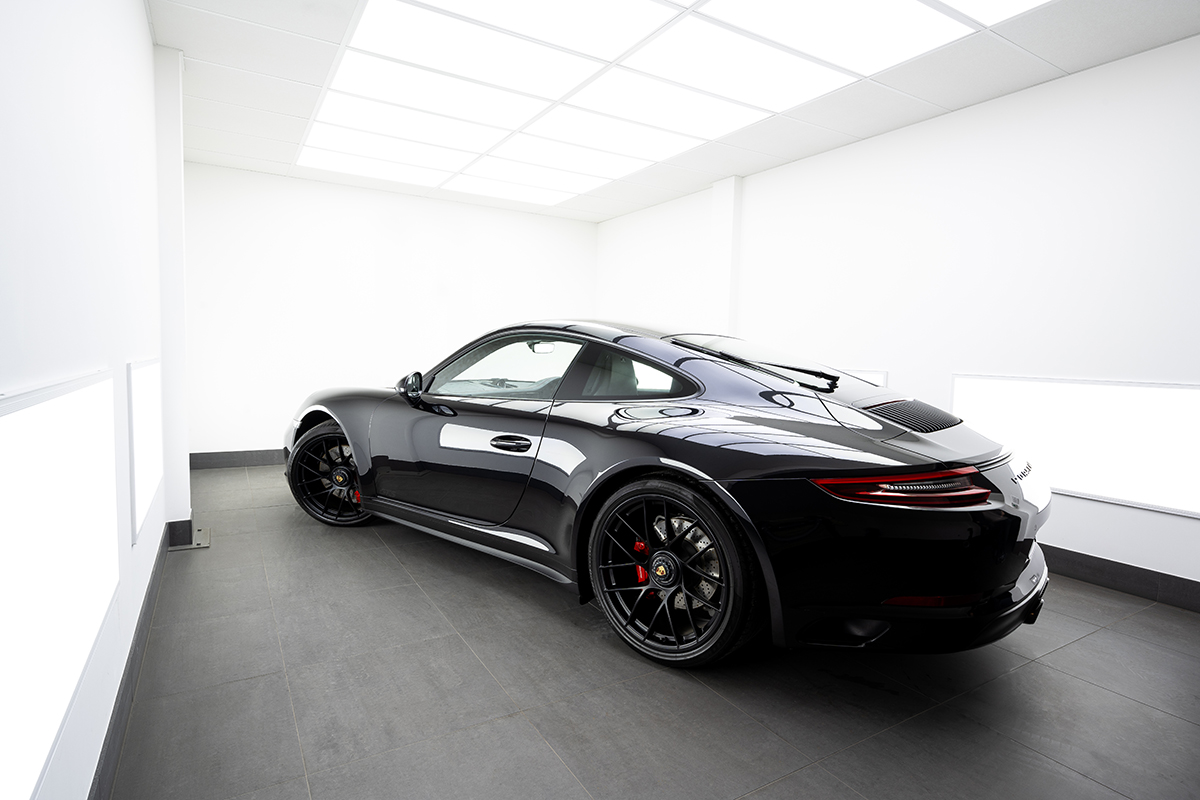On a quiet industrial estate in the southwest, Jake Glass-Hooper opens the door to a stark and monochromatic workspace lined with floor-to-ceiling strip lighting. On first impressions, you could be standing in a photographic studio or the subterranean lair of a villainous Silicon Valley billionaire. But this is Christchurch in Dorset, and Jake just wants to clean your car – and clean it really well.
God is in the detail, as the idiom goes, and a recent surge in demand for professional automotive detailing has prompted Porsche Post to take a closer look at this exclusive and fastidious industry. Gone are the days of sponging your pride and joy on the drive of a Sunday morning and, in truth, Jake would probably prefer it if you left well alone, so difficult is it to clean a car properly without covering it in the almost-imperceptible scratches that are his daily chagrin.
First Choice Detailing (FCD) was established in 2007 and has grown to become one of the most highly regarded caretakers of the south’s motoring exotica. The company is also now expert in the application of ‘PPF’ – the paint protection film that has rapidly become de rigueur among so many luxury and supercar owners.
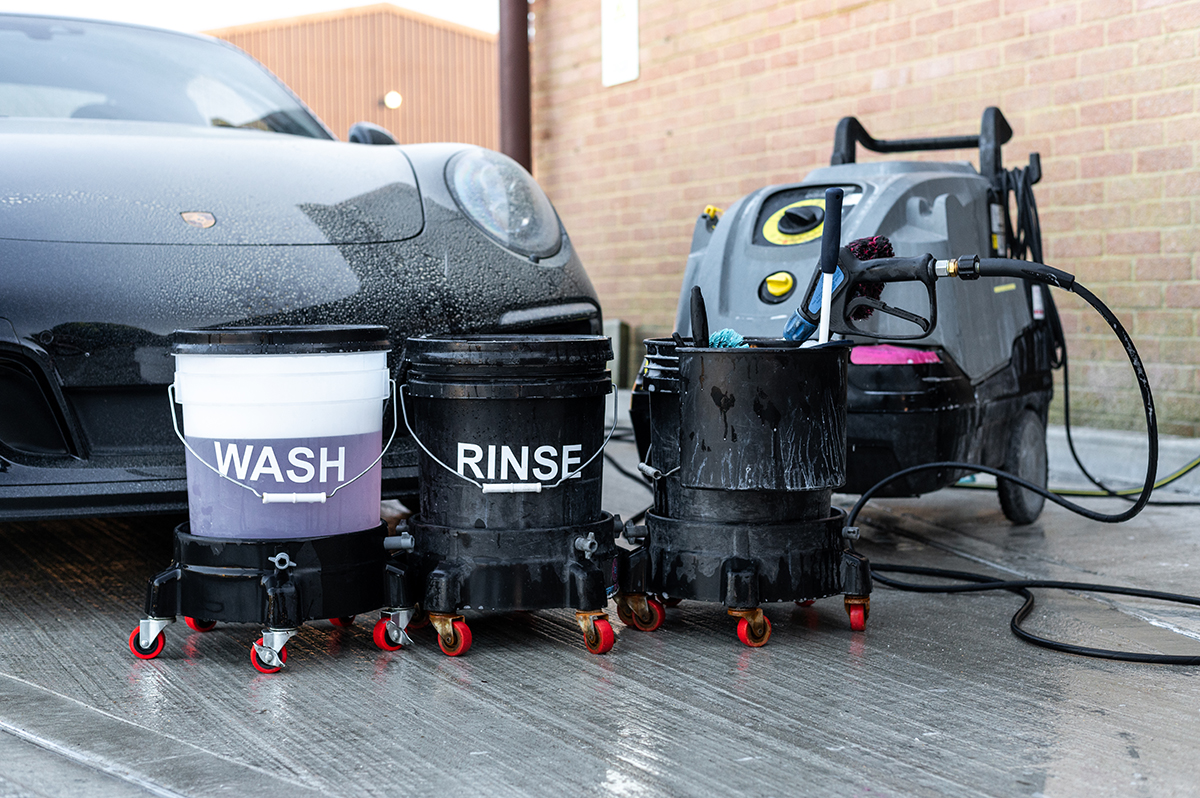
At FCD, our car’s journey begins back outside in a dedicated wash bay, where a painstaking programme of decontamination begins. The removal of every last vestige of dirt is key to avoiding the swirls you can see up close on so many cherished cars. The process targets the wheels first with a pressure wash, followed by soaking with a pH-neutral cleaner (Porsche’s centre-lock nuts are particularly prone to damage from the acidic cleaners commonly used at pop-up car washes). The wheels are then rotated through 180° to repeat the cleaning process before being scrubbed and treated with a pH-neutral shampoo.
The whole car is then jet-washed and degreased to soften any stubborn dirt before a snow foam is used to reach into all the nooks and crannies, followed up with soft brushes as part of what is still technically the ‘pre-wash’. More jet-washing precedes a 21-stage, two-bucket hand wash which itself is dictated by a series of prescribed rules. Work top to bottom and in straight lines to avoid swirl marks, one bucket to wash, one to rinse. Work one panel at a time and carefully rinse your cloths after each one is completed. Then a light hand dry and full machine dry with compressed air before moving the car into the workshop for the first time. It’s a job which, if done to FCD’s standards, will take up to three hours to complete.
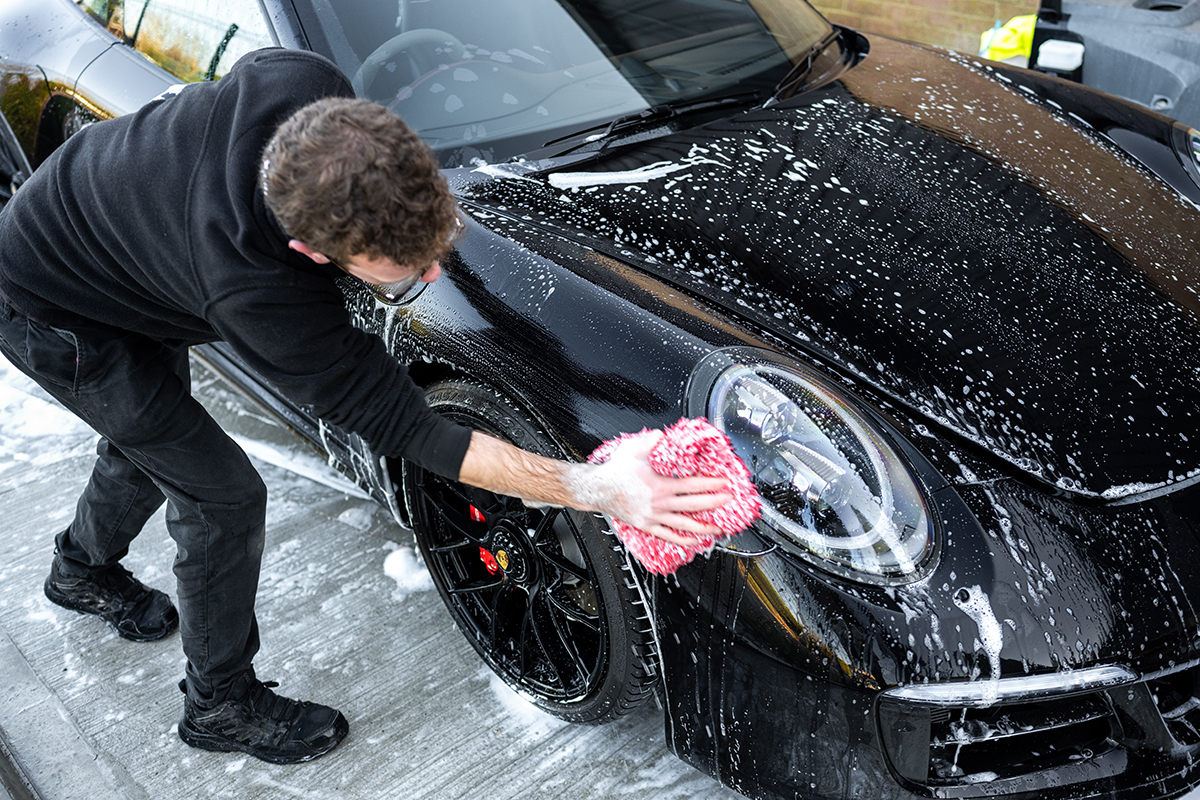
At this stage, the level of scrutiny is dialled up another notch, with the car placed on a hydraulic lift in a black-walled booth equipped with highly customisable lighting that can alter tone and direction at will depending upon the surface and colour in question. The entire car is then degreased again with thinners before the introduction of the claybar, a cleaning compound that picks up fragments of tar. It’s another exhaustive process that can only be done by hand, working slowly, precisely and in small, targeted areas.
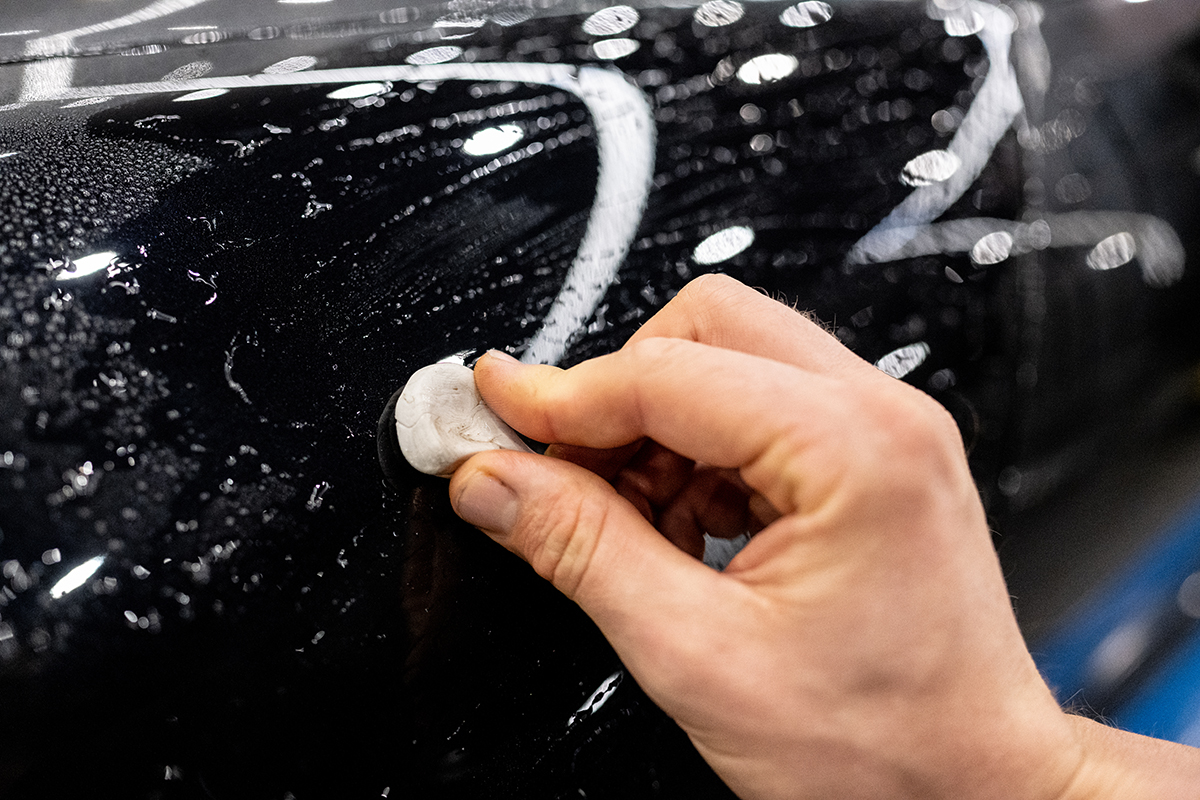
Then the polishing begins. If the car is due for PPF, this can be done in a single pass with a heavy cut compound before it is washed again to remove any microscopic particles that will prevent the film from enjoying a perfect finish. Alternatively, Jake will work through a variety of compounds in a multi-stage polish before applying a ceramic coating. This product is another that must be gradually hand-applied, consuming considerable man-hours. But the finish, which can last the best part of a decade if retreated with a top coat every other year, protects your paint from UV damage and acids, is naturally hydrophobic and enhances the paint’s gloss and depth.
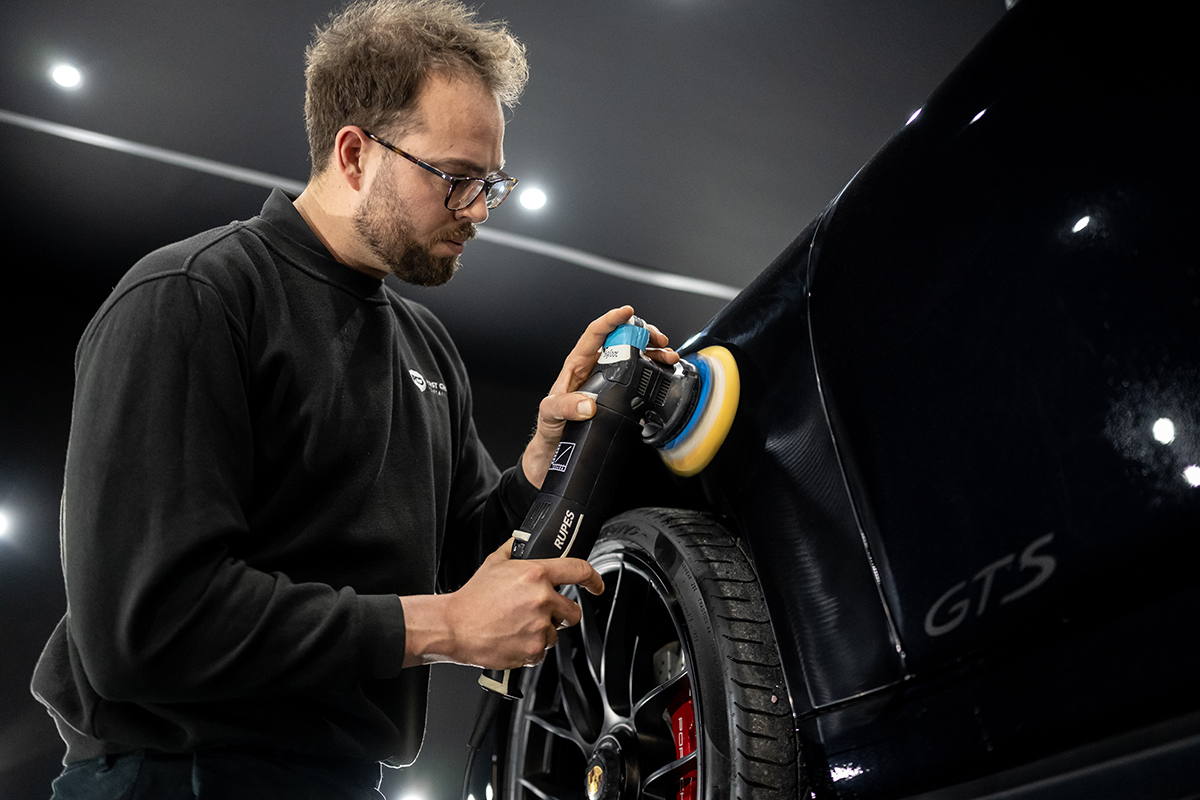
Many cars that come through FCD – and the car park is a feast of high-end British, German and Italian metal – will have PPF applied to the most vulnerable parts of the car and a ceramic coating to the rest, although it is not uncommon to cover an entire car in PPF in a process that takes one person in the region of four full days.
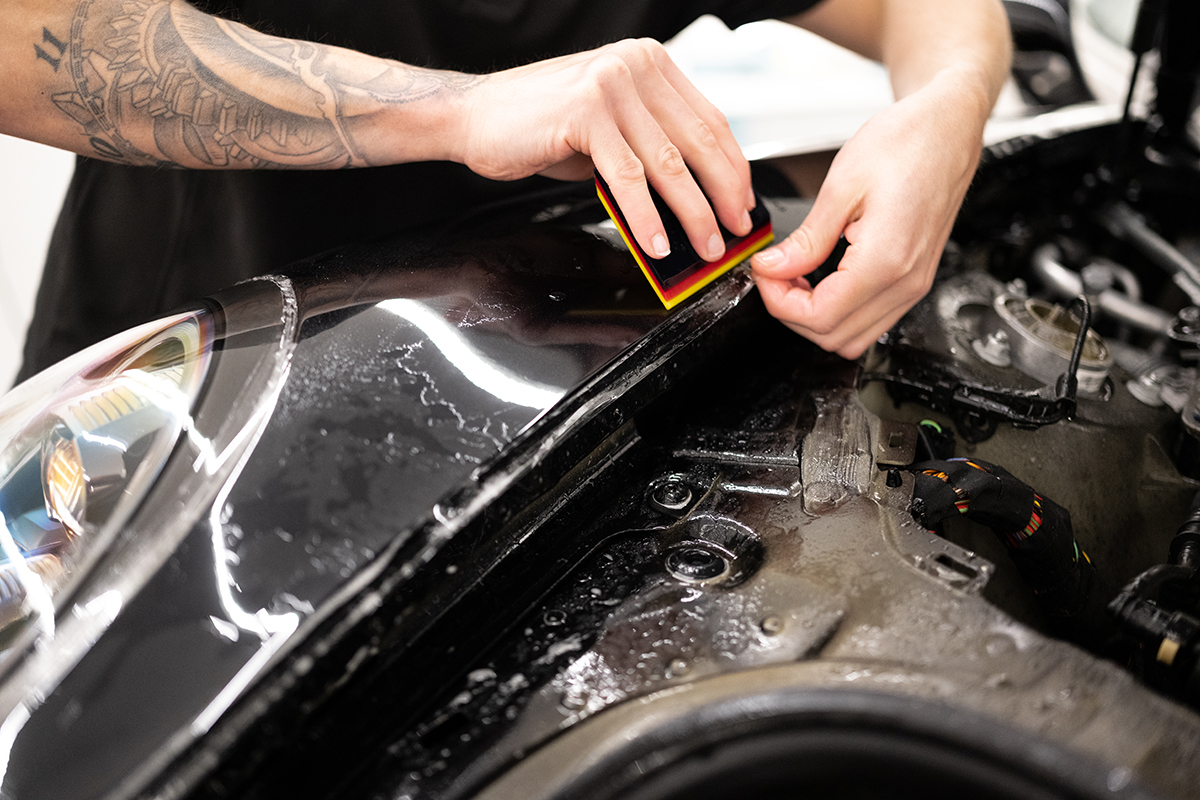
Upstairs at FCD, a machine called a plotter laser-cuts vast sheets of vinyl with precise, preloaded shapes available for every imaginable sports and luxury car on sale. These individual pieces are then hand-applied to a soaking wet surface, perfectly covering each painted panel with just enough excess material to wrap around any available edges. Once applied, any excess water is squeezed out from behind the film, leaving a mirror finish that the untrained eye cannot distinguish from unprotected paint.
The advantages of the film are many and varied. Despite being remarkably thin, the vinyl is actually double the thickness of paint and therefore tough enough to protect it from stone chips. It also allows you to wash your car without fear of scratching the paint or leaving any swirls in its surface. PPF even protects your car from the acids found in both bugs and bird droppings that can quickly erode normal lacquer if left in situ for too long.
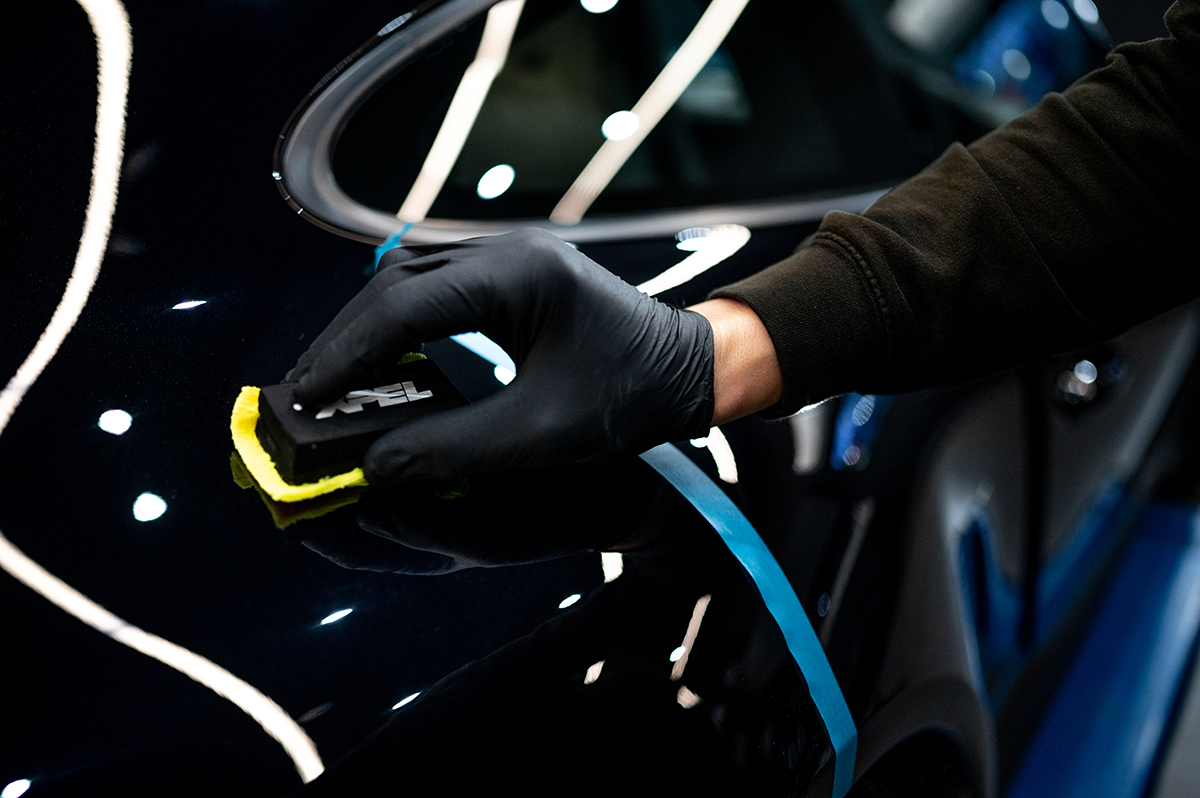
The popularity of detailing and PPF today reflects a different approach to car buying that has seen hire and lease purchase almost entirely replace the age-old outright acquisition. Dream cars for the few have become a welcome reality for many more enthusiasts, but the necessity of protecting your asset for resale has never been greater. Prices vary from the mid-hundreds to low thousands of pounds depending on the extent of corrective work undertaken and subsequent preservation, but that relatively modest initial outlay can mean years of stress-free ownership and a car that looks factory-fresh when you finally decide to sell.
